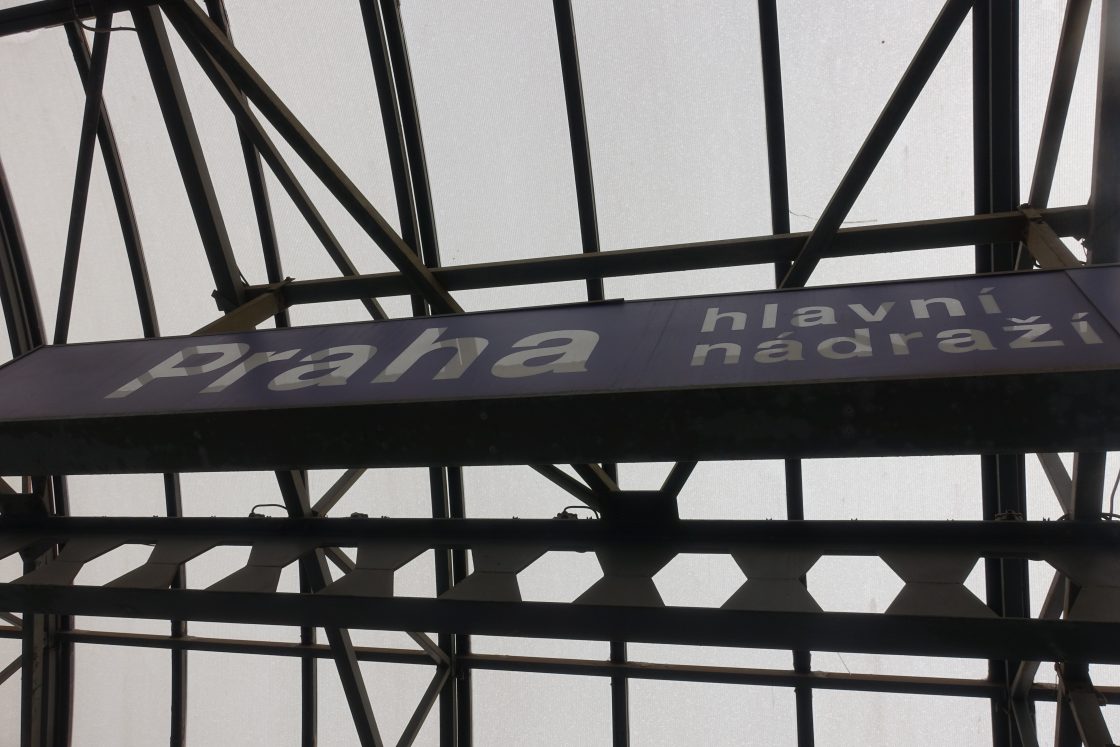In this ancient city where souvenir shops are shoe-horned into16th century buildings, it’s impossible not to get swept up in the historical romance of old Bohemia. A place of princes, garnets and gothic churches, Prague is teeming with intriguing stories, mazes of back streets and day-time beer in spades. Whether you visit with romance in mind or go for a solo trek, Prague will leave you just bitten smitten. Here are my top recommendations for an inspired visit.
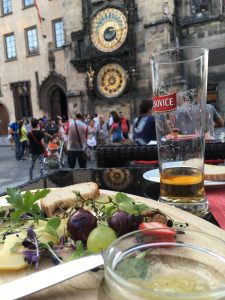
1. Enjoy a simple pleasure near a global treasure. Goat cheese is a thing now. And I really hate it, at least I did until I ate it in one of Prague’s most famous squares in front of the world’s most famous astronomical clock. Doing its thing since the 1500s, the clock animates at the top of every hour with a demonstrative story of right and wrong, drawing hoards of tourists to watch and record.
After nearly eight hours of walking the city, I decided to cap off my day by watching the clock come alive, but I arrived a half hour early. Ordering food and drink from a bar across from the clock got me a cushy front row seat. Maybe it was the ambiance, maybe it was fatigue, but probably it was the crazy delicious spicy fig jam, local bread, grapes and Pilsner Urquel that went with the goat cheese that changed my mind. So now, I like goat cheese – but only in Prague.
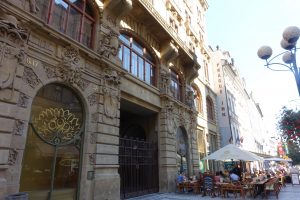
If you’ve never sat at a street café in a European capital people watching, witnessing history collide with everyday life and with just your thoughts and a simple, but delightful, meal for company, you’re missing out. It’s the kind of contemplation-required experience that I’d like to imagine Praha son Franz Kafka might have had and from which novels are born and business plans sparked. Not that you couldn’t have this experience in Times Square or a mid-western Main Street, but there’s something about breathing in a foreign environment that somehow introduces you to a braver, more inspired version of your own self.
2. Go to church. Lots of them.
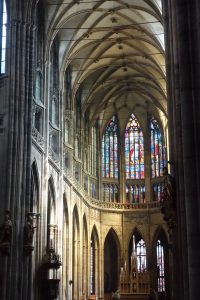
Something else that ancient, foreign environments tend to help you discover is that everything old will always be new again. From fashion and architectural trends to the causes of war and the issues that create social upheaval, Prague illustrates this cycle well. The tension between the religious and secular is all over Prague, for example.
There are dozens of churches and synagogues in the relatively small city, including the royal St. Vistus’s, the baroque St. Nicholas, the gothic Our Lady Before Tyn, the Virgin Mary pilgrimage site the Lareto and the ancient Old-New Synagogue. These buildings add distinction to the Prague skyline and have breathtaking design details. But they are also chess pieces in an intricate history where bohemian spirituality, Judaism and Catholicism have fought for political power and the mindshare of the people, not to mention the more modern interference from Communist and Nazi influences.
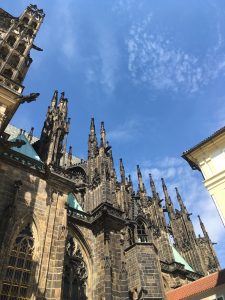
Get a short guide book and read it so that when you see the breathtaking buildings themselves, you’ll actually know something about what makes them so important. Like, that within the imposing dual spires of Tyn, the Bohemian reform movement flourished and underneath them, astrologist Tycho Brahe is buried. Or that the Old-New Synagogue is the oldest in Europe, thanks to surviving waves of anti-Jewish movements over the years.
3. Touch something older than your imagination can fathom. In a private moment I walked the interior of St. George’s Basilica in Prague Castle, trailing my fingers along the rough stone walls as I walked. The oldest example of a Romanesque period structure in Prague, the building was built in 920 with major repairs around 1142.
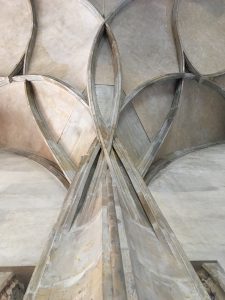
Another time I stood in Vladislav Hall within Old Prague Castle and traced the delicate inlaid pattern that scaled up to the sky high ceiling and had been there since the 1490s. As I walked in both places, all I could think was that my feet and my hands were in the same space, on the same surfaces as people who had lived hundreds of years ago. I’m fascinated to know that a step I take could have been the same step taken by a priest, a shop-keeper or a queen. It’s not a very postcard-able memory, but it’s something that will live in me forever.
4. Pretend you’re a local.
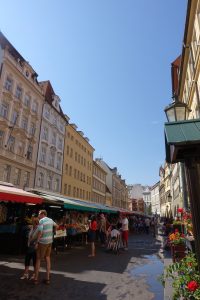
Fair, unless you speak Czech and look like an Eastern European, you’ll never really pass for a local. But, the basic idea is to work hard to experience the surrounding culture as it really is, versus what the tourist trade has prepared for you. Start by calling it Praha while you’re there, that’s the city’s proper Czech name. Another simple way – try hitting up multiple local spots to build your own hometown breakfast instead of visiting your hotel restaurant. Start with the famous Havelská market for fresh fruit and a local beverage. Then stop into a local baker or even a grocery chain like Billa for bread and cheese to go.
Skip the cabs and take public transit, or better yet, take the city by foot, weather permitting. If you spring for data coverage from your cell provider, Google Maps is the perfect walking companion, with super accurate turn-by-turn directions that will get you from one end of the city to another. Prague is a very walkable place which also happens to be sectioned off into unique neighborhoods, each with sites to see and stories to hear. Take a cab from point A to B in Old Town and you’re bound to miss the famous winding Melantrichova Passage, a hairpin thin must-see street for pedestrians only.
And more than site seeing, I think you’ll be amazed what a different experience you will have walking alongside residents instead of driving past them, able to see their expressions closely and hear their voices clearly. Even your fellow tourists from all over the world will mean more when you share the sidewalk. You never know what you’ll hear or who you’ll meet.
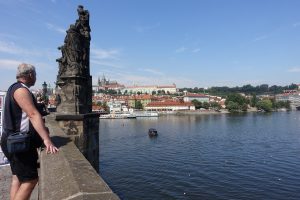
5. Read the locks and the faces. Charles Bridge is Prague’s most recognizable landmark. A pedestrian-only crossing of the Vltava River, the bridge and its tower buildings offer wonderful views of Prague Castle and the Little Quarter. Once the site of the Thirty Years’ War truce, the bridge is anchored every few feet by impressive statues of religious figures, from St. Francis of Assisi to Prague’s own St. Wenceslas.
These statues rise above the bridge with the sun at their backs, partly imposing over the musicians and craft-makers peddling their talents and wares below and partly blending in with them. Spend some time staring up at a couple of the statues – scrutinize their body positions, clothing and accessories and their facial expressions. One can never know the exact intention of an artist, but this is a great spot to guess.
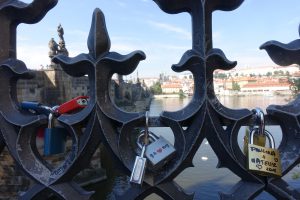
Something on the bridge that’s a bit more obvious are the messages Sharpie’d onto locks along the bridges railings. Part of the love lock fad, the largest patch of locks is found on the Little Quarter side of the bridge adjacent to the bridge tower. Spend some time reading them, imagining who left them there and what thoughts and feelings they wanted to convey by literally securing their words in history. Maybe leave a lock of your own, a way of telling the world, “I was here.”
6. See art everywhere.
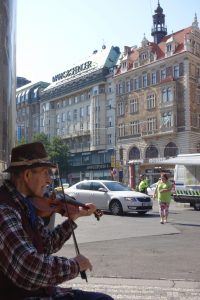
Prague is so full of landmarks, it’s easy to take for granted all the other sites that don’t make the ‘best of’ tour lists. In fact, just wandering the streets of Prague’s five distinct quarters you’re bound to see local artists and musicians performing everywhere. And to see dozens of breathtaking buildings with architectural detail from various historical periods – Baroque, Renaissance, Gothic, Neo-classical, Nouveau Art, Romanesque and more. Even when you have no idea what lies behind the doors, don’t take any structure for granted, in fact, take it on purpose and observe art in life.
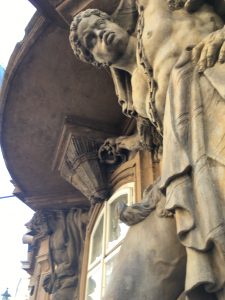
Until the late 1700s, for example, Prague houses didn’t have number identifiers, but instead had signs that illustrated the business of the occupants. Consider if today you had to mark the door of your 2-bedroom with a digital marketing badge or a technical accounting crest. I imagine this served many purposes, mostly functional – identifying where to go to get certain services or goods . But I imagine in a society full of political and social change these badges symbolized much more – who was Royal and who was not; who was merchant and dealer and who was artisan. And perhaps the lack of a crest meant simply not being significant or wealthy enough to have one – a statement all its own.
Many of those signs remain today, now purely decorative. A visit to famous Nerudova Street in the Little Quarter provides lots of locations boasting these little gems, from swans to golden swans. But, tiny details like those are found all over the city. Keep an eye out for door carvings and built-in statues, inscriptions, and golden details.
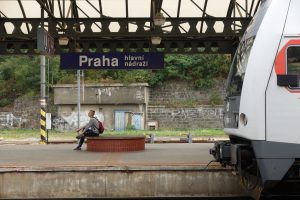
7. Go to and from by train. The downside of Eur-railing into Praha is you won’t get that coveted Passport stamp, which is a genuine disappointment. But, what you will get is an incredible view of the country side and neighboring cities between Prague and wherever you wind up. I went round-trip from Berlin but Vienna is also a typical feeder to Prague, both trips taking about 4.5 hours. If you’ve never done it, take it from me, there’s just something magical about train travel. Sure, it’s not the fastest route from A to anywhere, but what you sacrifice in time you make up in exposure to places you’d otherwise never even know about.

